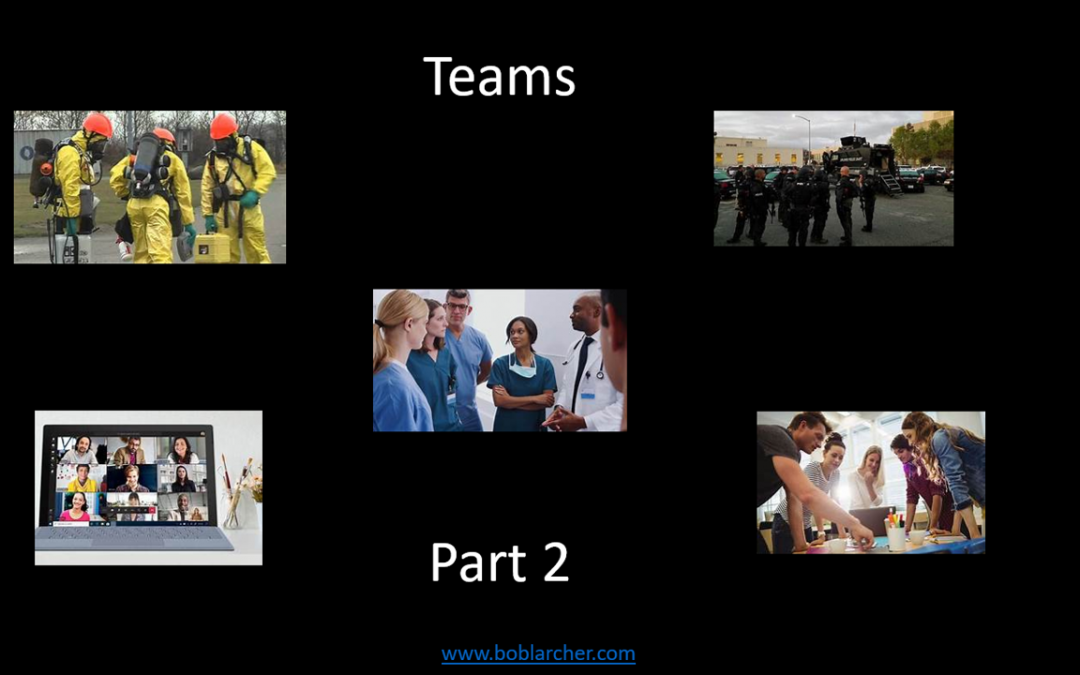Part 2 of a five-part series of posts around the subject of teams
In this part, I will look at some of the “frameworks” that have inspired me and helped me over the last 30 years
“A framework helps to understand the issue, it doesn’t give the answer”
My current thinking is based on the integration and unification of numerous organisational researchers; all of whom I owe a lot of gratitude for their inspiration.
It is not my intention to list and explain all the frameworks that have inspired me over the last 25 years or so, but there are some frameworks that I feel need a particular mention
The Katzenbach and Smith, “Team Basics Model” identifies three overarching goals:
Collective Work Products, Personal Growth and Performance Results.
The authors contend that not only are successful teams deeply committed to their goals, approach, and purpose but the team members in these teams also are very committed to each other.
They assert that successful teams always are a result of pursuing demanding performance goals at the team level
In his “Team effectiveness model” Hackman, states that a team is most likely to be effective when the following conditions are satisfied:
It is a real team rather than a team in name only
The team has a compelling direction for its work
The team has an enabling structure that facilitates teamwork
The team operates within a supportive organizational context
There is ample expert coaching in teamwork available
In his framework, “Understanding team dysfunction”, Lencioni talks about the five potential dysfunctions of a team:
Dysfunction 1: Absence of Trust – team members reluctant to being vulnerable with one another
Dysfunction 2: Fear of Conflict – team members incapable of engaging in unfiltered, passionate debate about key issues
Dysfunction 3: Lack of Commitment – team members unable to commit to decisions
Dysfunction 4: Avoidance of Accountability – hesitation to challenge peers on actions and behaviours
Dysfunction 5: Inattention to Results – personal needs ahead of the collective goals
The Impacts Team Performance Inventory identifies six domains contributing to effective teamwork:
Unified Purpose — a shared understanding of why the team exists
External Alignment — the context within which the team operates
Agreed Approach — the team’s conscious and recognized use of norms and processes
Effective Relationships — trust, openness and honesty on the team
Quality Conversations — communication and interaction within the team
High Performance Mindset — the ongoing process of team learning and development
The Curphy and Hogan “Rocket Model”, consists of eight components (and associated questions) considered to be necessary to create high performing teams:
Mission – why are we here?
Talent – do we have the talent we need?
Norms – what are the rules?
Buy-in – are we all committed to success?
Resources – do we have the resources needed?
Morale – how do we work through disagreements?
Results – are we achieving our goals?
The Korn Ferry T7 Model of Team Effectiveness identifies five internal team factors:
Thrust – a common purpose about what needs to be accomplished or team goal(s)
Trust – in each other as teammates
Talent – the collective skills of the team members to get the job done
Teaming Skills – operating effectively and efficiently as a team
Task Skills – executing successfully or getting the job done
and two external team factors:
Team-Leader Fit – the degree to which the team leader satisfies the needs of the team members
Team Support from the Organization – the extent to which the leadership of the organization enables the team to perform
The AQR Team Work Orientation Inventory identifies 5 aspects of team working which appeared all teams
Common goals and objectives – the extent to which team members understands the team’s goals
Continuous improvement – the approach to dealing with problems and issues
Working together – the extent to which the team recognises and understood the strengths and limitations of its members
Engaging with success – the extent to which the team recognises what success looked like
Effective communication – the extent to which team members engage with each other
Others more than worthy of a mention are Wheelan and her “Integrated Model of Team Development”, McKinsey & Company and their work on “Teamwork at the top”, the Aston university’s Aston Team Performance Inventory (ATPI) and Drexler & Sibbet and their Team Performance Model – my apologies to those I have forgotten but have contributed to my approach today.
In part 3 I will look at what I consider to be the essence of a performing team
If you would like to discuss teams and their development do not hesitate to contact me at boblarcher@boblarcher.com

I help people to develop their interpersonal skills, usually within a leadership or teamwork context. If you are looking to develop your leadership, I might be able to help. I’ve been doing this for almost 40 years; roughly four thousand days of seminars, workshops, conferences, coaching, offsites, webinars, etc. – put back-to-back that makes almost ten “full” years.



